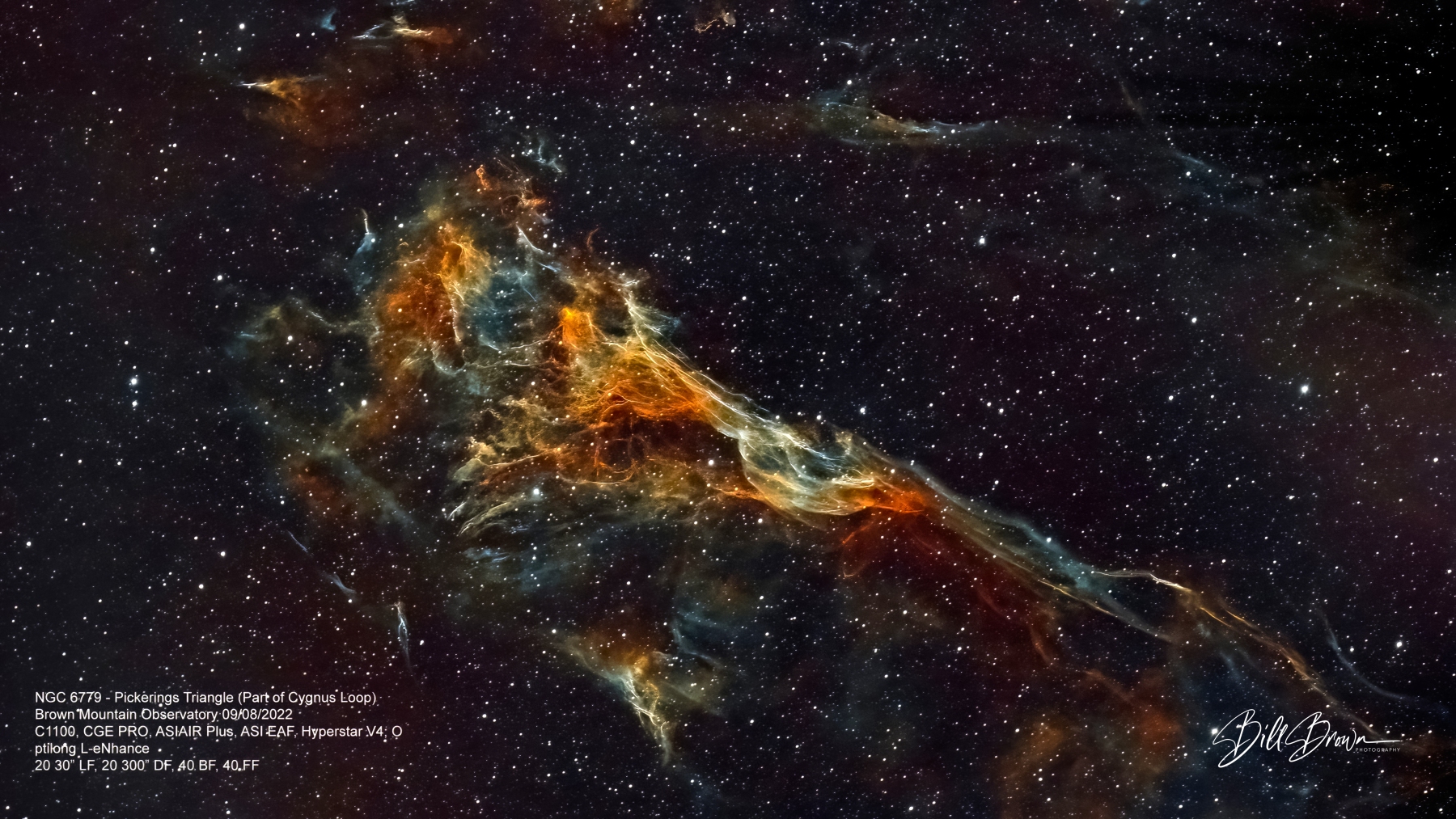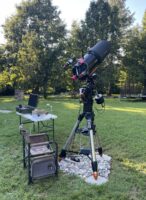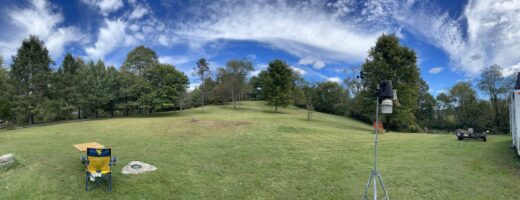Pickering’s Triangle is part of the Cygnus Loop supernova remnant, which includes the famous Veil Nebula, and like the nebula, it emits in the Ha, SII and OIII wavelengths. The most common images made by astrophotographers are a combination of Ha and OIII, which are truly beautiful with the typical red and blue hues assigned to them. However, there is a strong SII emission that is mapped to golden yellow. “Pickering’s Triangle” is the name for the portion of the Veil Nebula in the Constellation of Cygnus that is included in the image above. It is much fainter than the two main loops that form this supernova remnant. It has no NGC number (though NGC 6979 is occasionally used to refer to it). It was discovered photographically in 1904 by Williamina Fleming (after the New General Catalogue was published), but credit went to Edward Charles Pickering, the director of her observatory, Harvard College Observatory, as was the custom of the day. It is located about 1,500 light-years from Earth, in the constellation Cygnus.

Pickerings Triangle within the Cygnes Loop
- brownmtn
- February 19, 2016
- Uncategorized


